Speed climbing extraordinaire and Diablo Rock Gym manager Hans Florine took a nasty fall on El Capitan on May 3rd. We caught up with him to hear more about his death-defying experience and learn how to get back up from the best.
You’re something of a legend in the climbing world! Can you tell us a little bit about your climbing background? How did you get started? How did you become the climber you are today?
I was asked to go climbing in a college dorm room in November 1983 at Cal Polytechnic SLO. We went to a 25-foot high boulder in a cow field. I loved it! The first few years was the love of the adventure—the fun of having a “quiver of tools” over you shoulder and seeing what terrain you could get up. I was a regular weekend warrior in Joshua Tree for years, and infrequently headed to Yosemite. Then competition and sport climbing hit and I totally sunk myself into those. In the mid- to late 90s I gave more time to Yosemite trad and long route climbing.
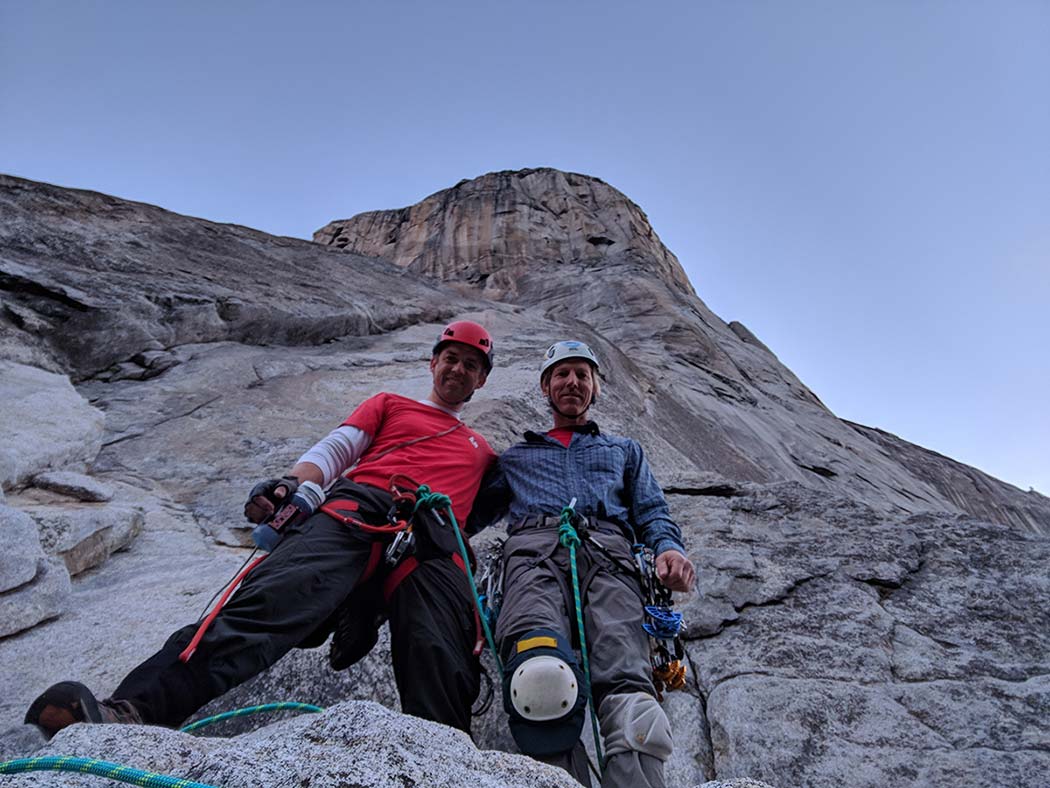
You’ve climbed El Cap well over 100 times and your speed record on The Nose, El Cap’s most famous route, held for 5 years before just barely being broken by 4 minutes last year by Brad Gobright and Jim Reynolds. What keeps bringing you back to El Cap and to this route? What is it about speed climbing that is so compelling?
The Nose is The “Everest of Rock Climbs.” Wherever I went in the world, in the community of climbing, people knew me, and they knew me because of my association with The Nose. Speed climbing is FUN! You cover a ton of ground and get to return to your car, campground, or home the same day. I just got off the phone with Alex [Honnold], he’s been running up The Nose with Tommy Caldwell. You can here how giddy he is in his voice—the two of them just think it’s plain FUN!
What were you doing on the route on May 3rd? Are you training to retake the speed record?
I was just going for a leisurely ten or so hour ascent of the route. YES I was training to for the record, BUT I wasn’t planning to go for taking the record back, ever. Training for it is fun, and it takes more time than actually getting the record—whoa!
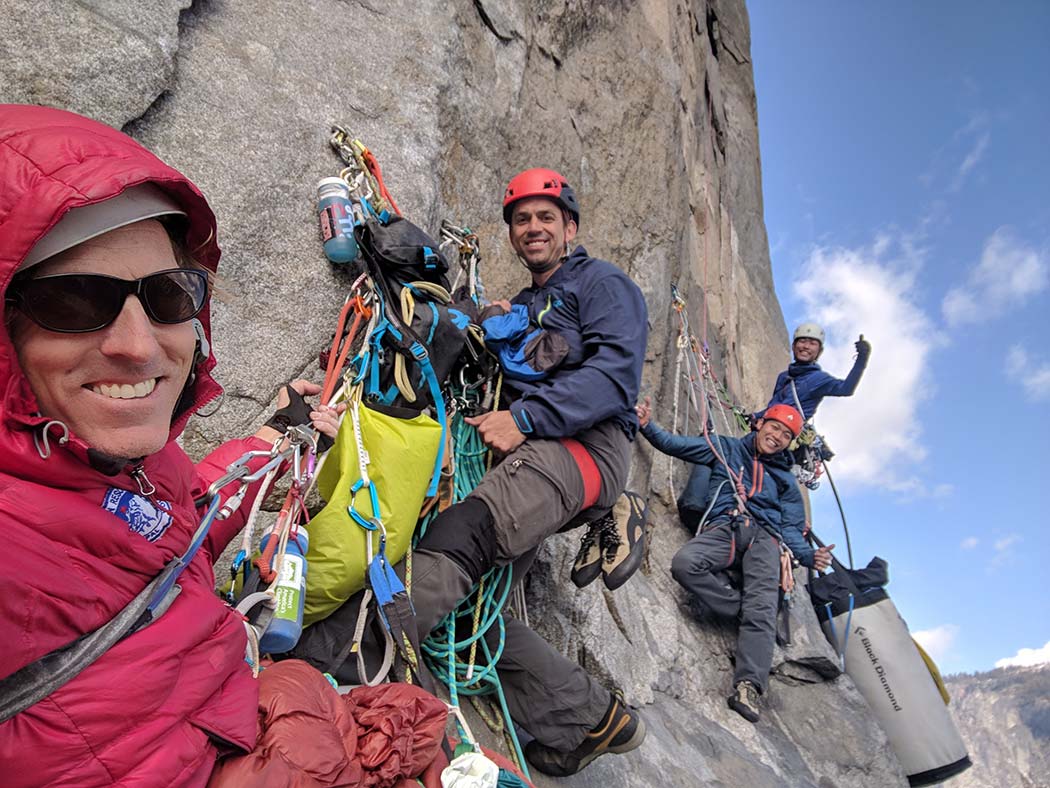
Tell us what was going on when you fell. Was it a freak accident?
I was aid climbing. A #1 Camalot was at my ankles and I had a 1/2 inch nut at head height, which I tested, but then when I stood on it with my aider, it blew. I hit the ledge straight below before my rope went tight. I was on self belay. After my feet crumpled into the ledge I fell backwards and gingerly hung on the end of the rope upside down. I righted my self and could reach the ledge with my hands so I pulled up and sat down, knowing that putting weight on my legs/feet was not an option. Had I jumped out a foot and half or my rope been six feet shorter I would have been fine.
“Freak”—not really, but notable that I’ve been up El Cap 178 times and never needed a rescue. I’ve been injured and gotten myself off three times before, but never near this bad. If you drive enough miles you will get in a car wreck. I figure I am a great driver or safe climber, since no one else has the ratio of non-accident climbs to rescues that I have. 🙂
What was it like getting rescued by YOSAR? Why did they decide to airlift you from the summit rather than lower you to the Valley floor? How was the ride in the helicopter?
YOSAR was safe and competent. Winds were too strong to pick me off the route. Lowering to the ground was an option; I thought long and hard about doing that on my own and asking others, not YOSAR, to race up and join us in the lowering. It may have taken eight hours to lower me to the ground, but that would risk me banging my leg/feet and possibly damaging my leg worse than sitting tight and waiting for YOSAR to come from the top. I thought it was best to wait for them and we did.
I commuted in a helicopter one summer on a smoke jumping job, but this ride was uneventful. I was on my back for most of it and didn’t really have much of a view.
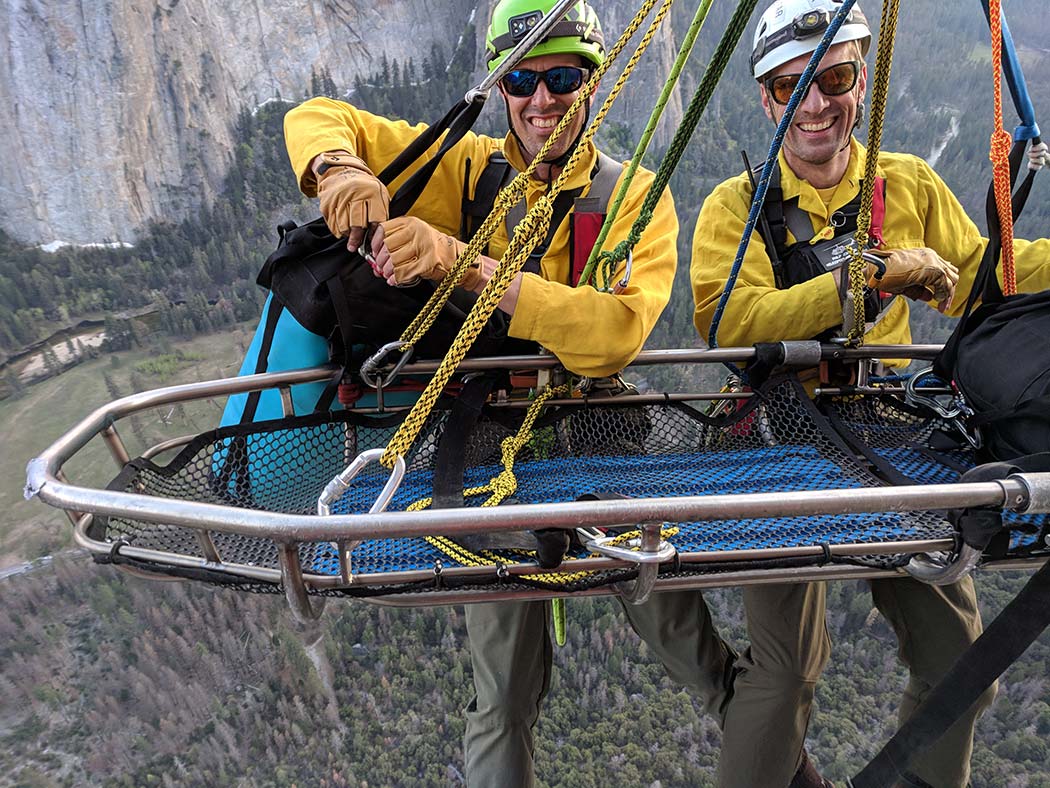
What’s the prognosis?
Left: Broken tibia, fibula, and pilon portion of bone. Right: smashed heel/calcaneus. Both under go surgery on the 21st probably at Kaiser in Oakland.
You mentioned that you’re looking forward to using this time to perfect your one-arm pull ups! What do you think your strategy will be? Any other goals while your legs recover?
Yep, one-arm is on the goal sheet for 2018. I think I’ll try for my lifetime best in the bench press too (235 lbs.—yikes!). Pull up, lock off, lower with one arm, repeat. Front lever is also on the goal list to for 2018. As for non-physical goals, my audio version of my book is recorded and I just need to do the final edits.
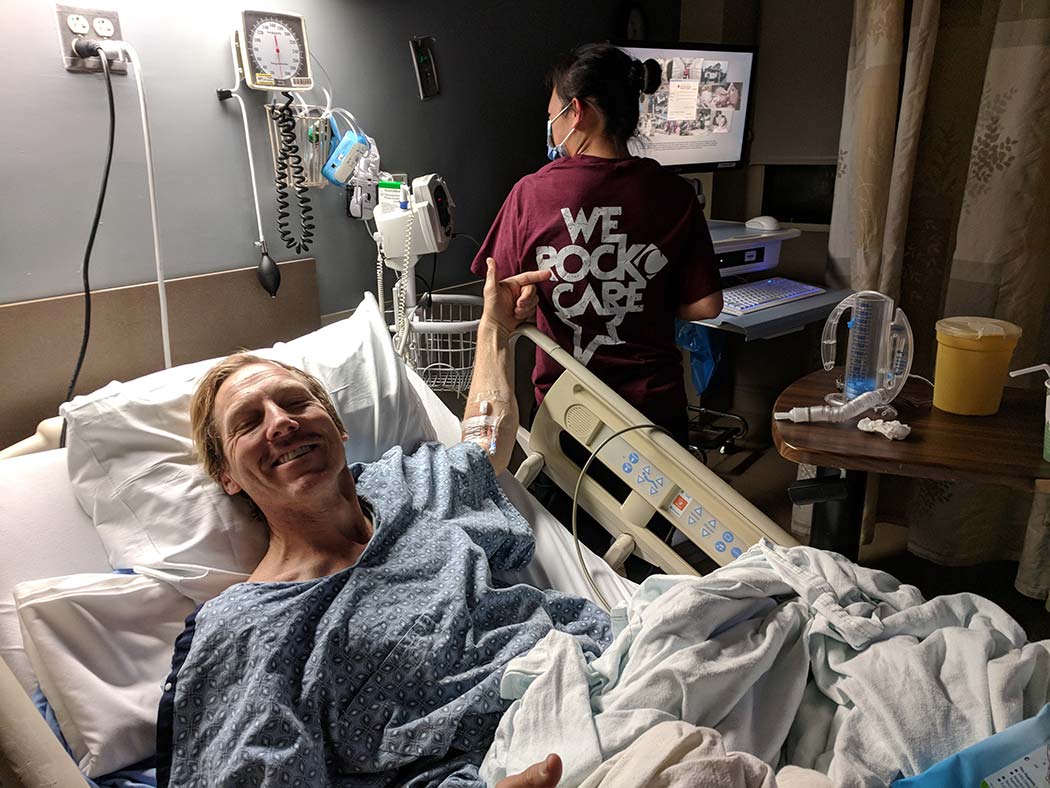
Has your perspective on climbing or your system changed at all since your fall? Any advice you’d like to give readers?
I’ve always hailed climbing as this awesome sport where if anything is injured you can train the uninjured parts! I know that since everything contributes to climbing, from the toes to the top of your head, anything injured means you can’t climb at your best. Alas, I’m in a situation to train what I can, and train I will. I also might start competing in hand cycle races or wheel chair sports.
Advice: get hurt living, not tripping on a curb while you are texting. (Hint: “texting” is close to “existing.”) Put more importance on doing, rather than sharing the story. I know that it appears I post a good bit on social media, and I’ll take doing over spraying about it any day, but sharing the fun adventures IS fun! It does motivate you in a circular way as it comes back around to you. Just be sure you DO first, you live first, and worry about texting it second. Tip: You can put an auto responder on your text app that says: “Can’t respond right now, I’m climbing.” And yes, there is an emoji for climbing now!
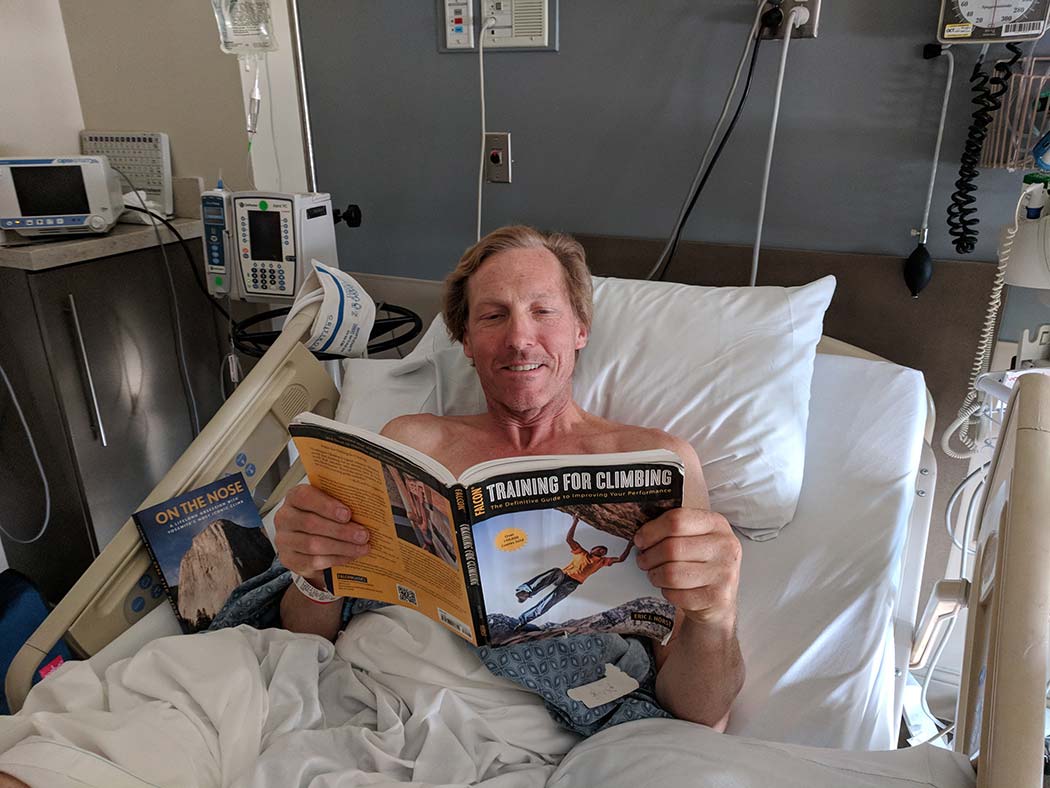
We’re all wishing you a speedy recovery, Hans! Check out these articles to read more about his experience:
- Famed Bay Area climber Hans Florine rescued after fall breaks bones on El Capitan, SFGate
- Rock climber rescued from Yosemite’s El Cap back in Bay Area, ABC7 News
- East Bay Climber Recounts Harrowing Fall from Yosemite’s El Capitan, NBC Bay Area
- Hans Florine on His Terrifying El Cap Fall, Outside Online
- Hans Florine Breaks Both Legs in Fall on El Capitan, Rescued by YOSAR, Rock and Ice
- Concord climber back at work after falling from Yosemite’s El Capitan, KRON4 News

